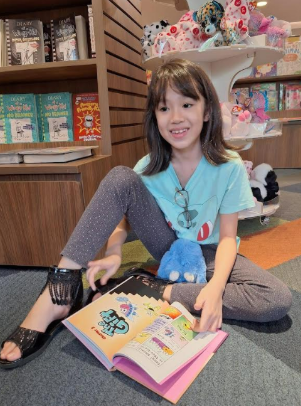
Naomi S. Inting is from Quezon City, Metro Manila who loves to read stories about fantasy, mystery, and comedy. At 9 years old, she’s lived with four cats throughout her life: Boxer, Liger, Duday, and Shiro. She likes cats because they are cute and furry, and can jump really high. While she’s never lived with a dog, she likes chihuahuas because they’re small, loud, and have dark beady eyes. In her spare time, she enjoys playing piano, reading, drawing, watching anime, and practicing karate. She dreams of being a zookeeper who helps with restoring endangered species and reintroducing them into the wild. “No More CATS!” is her first published story.
Continue reading


